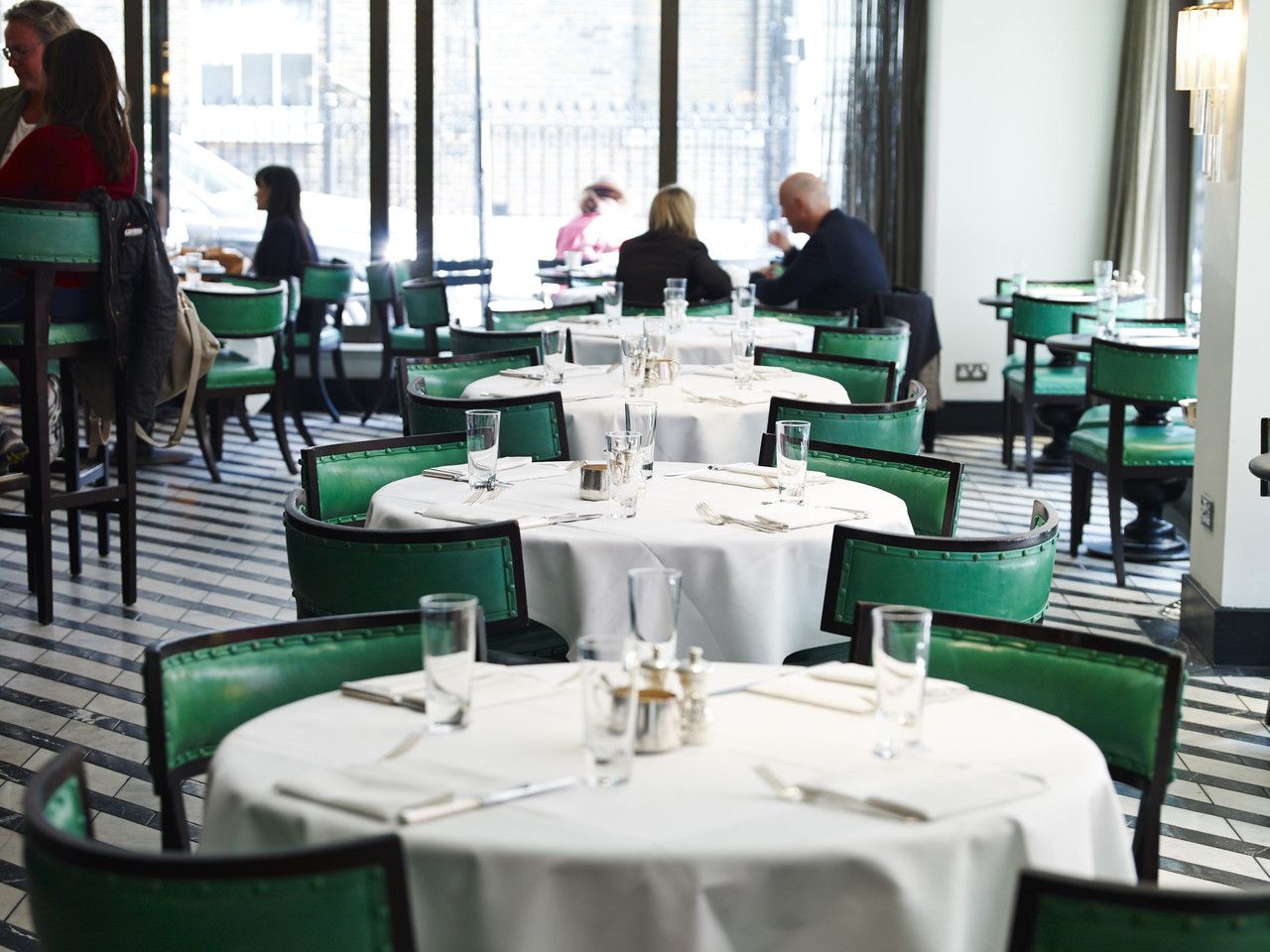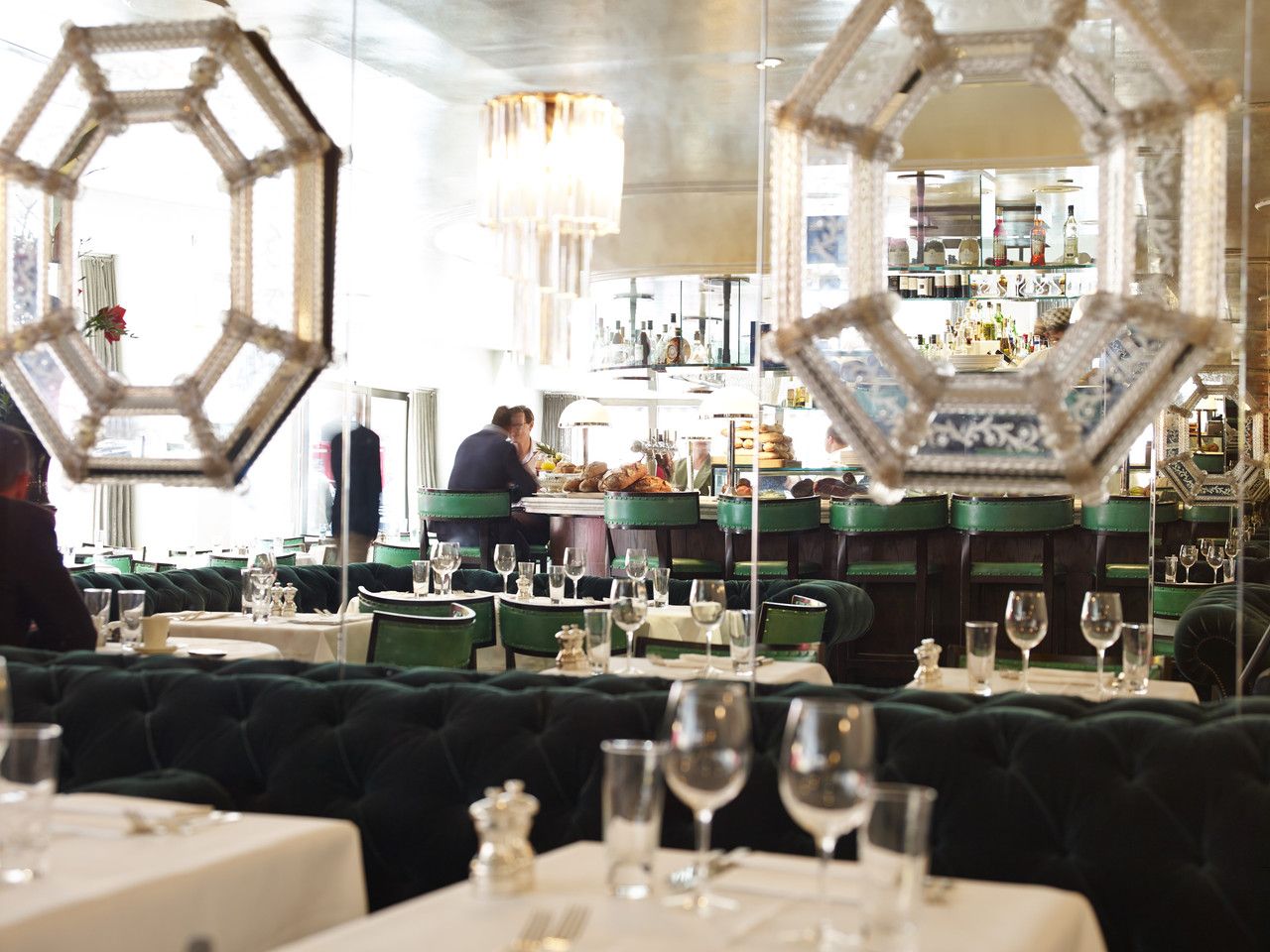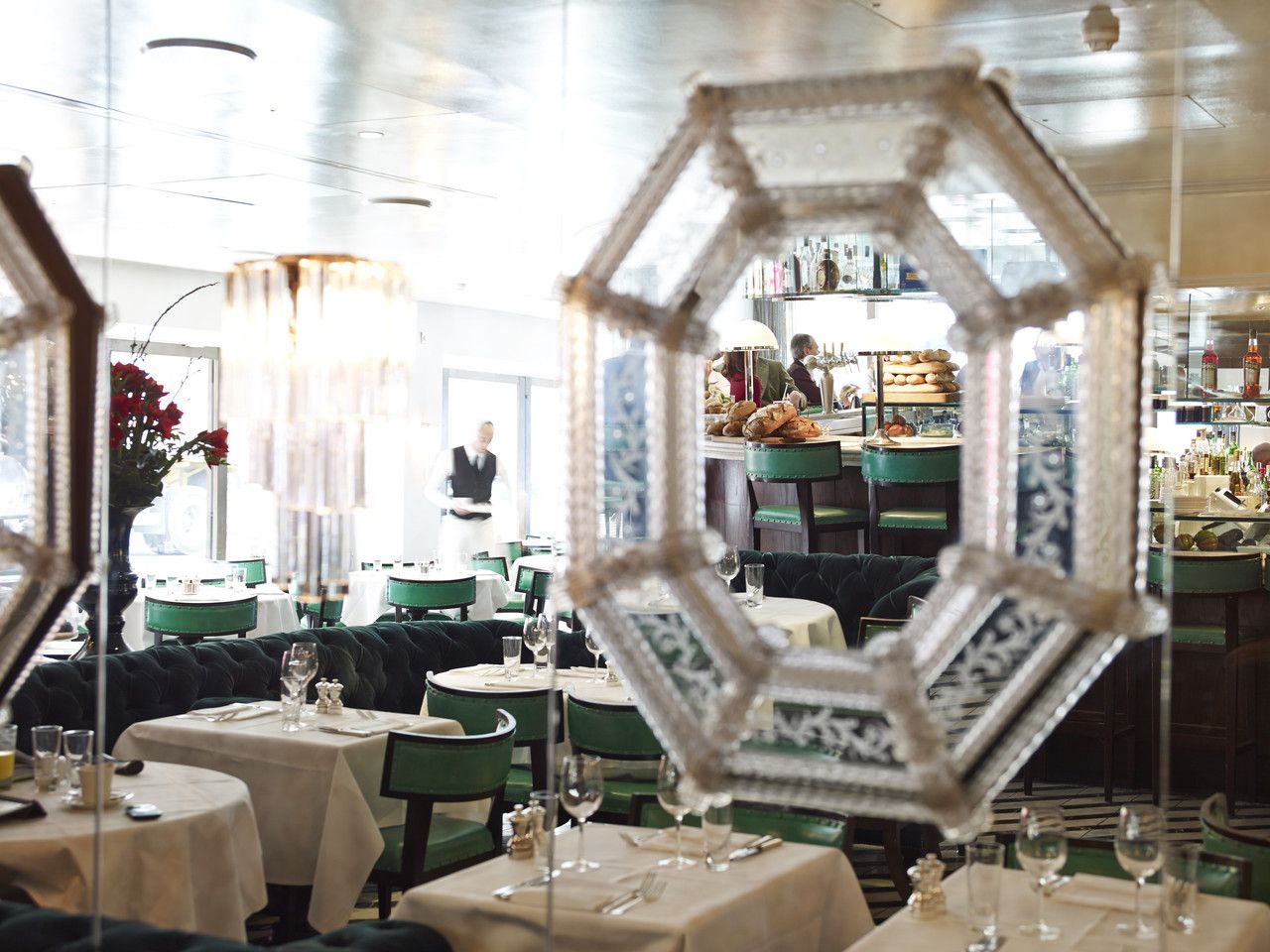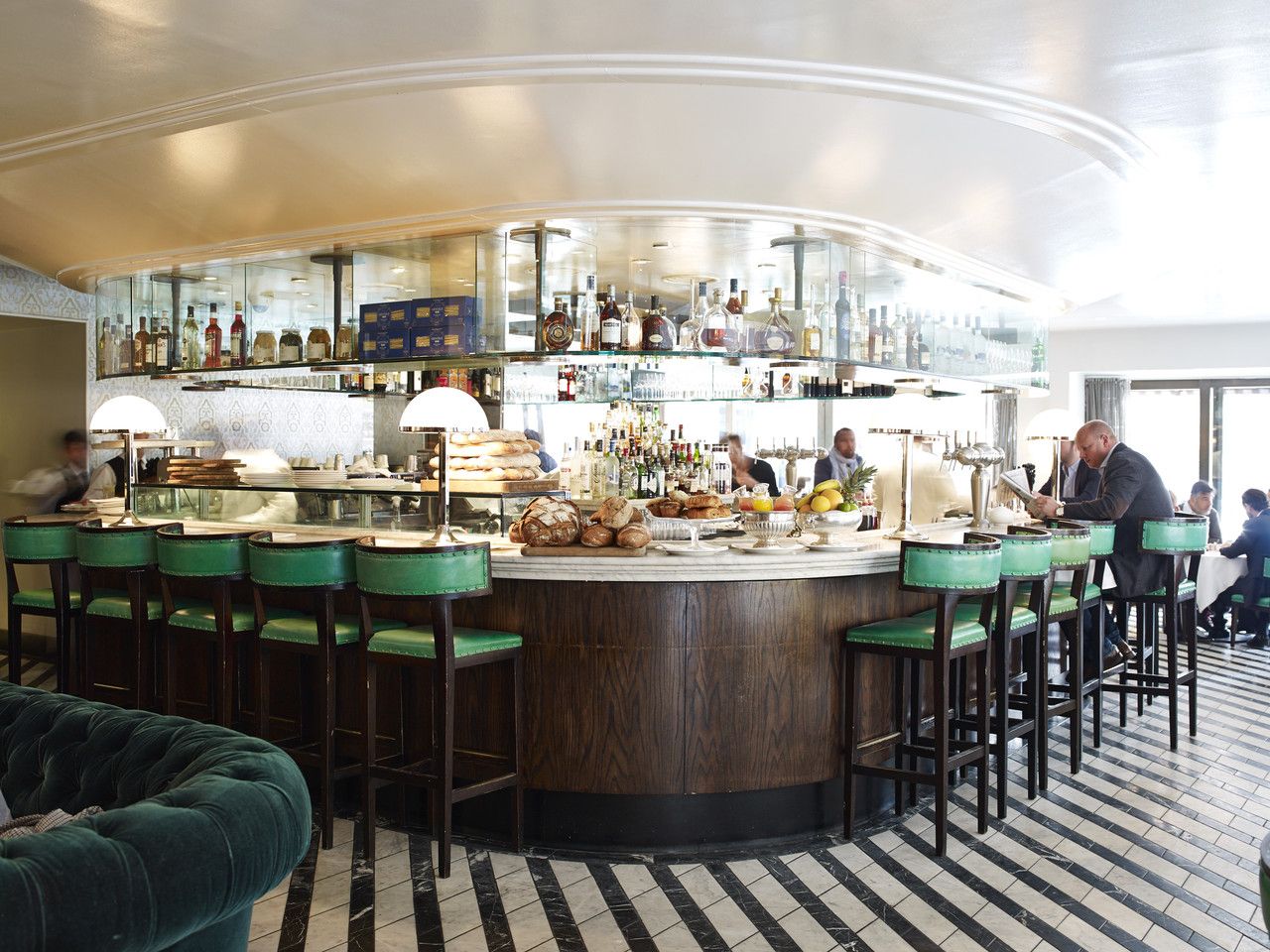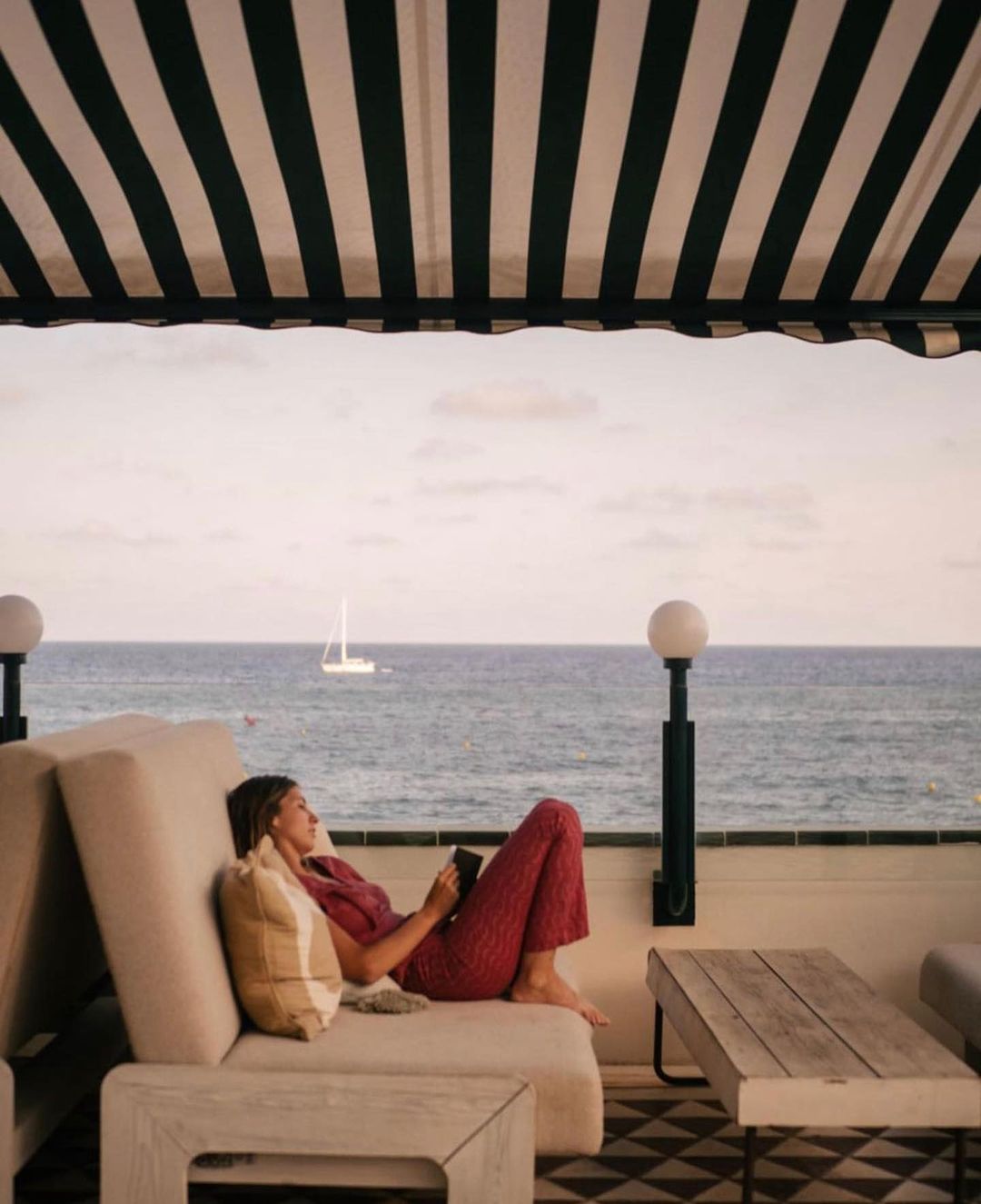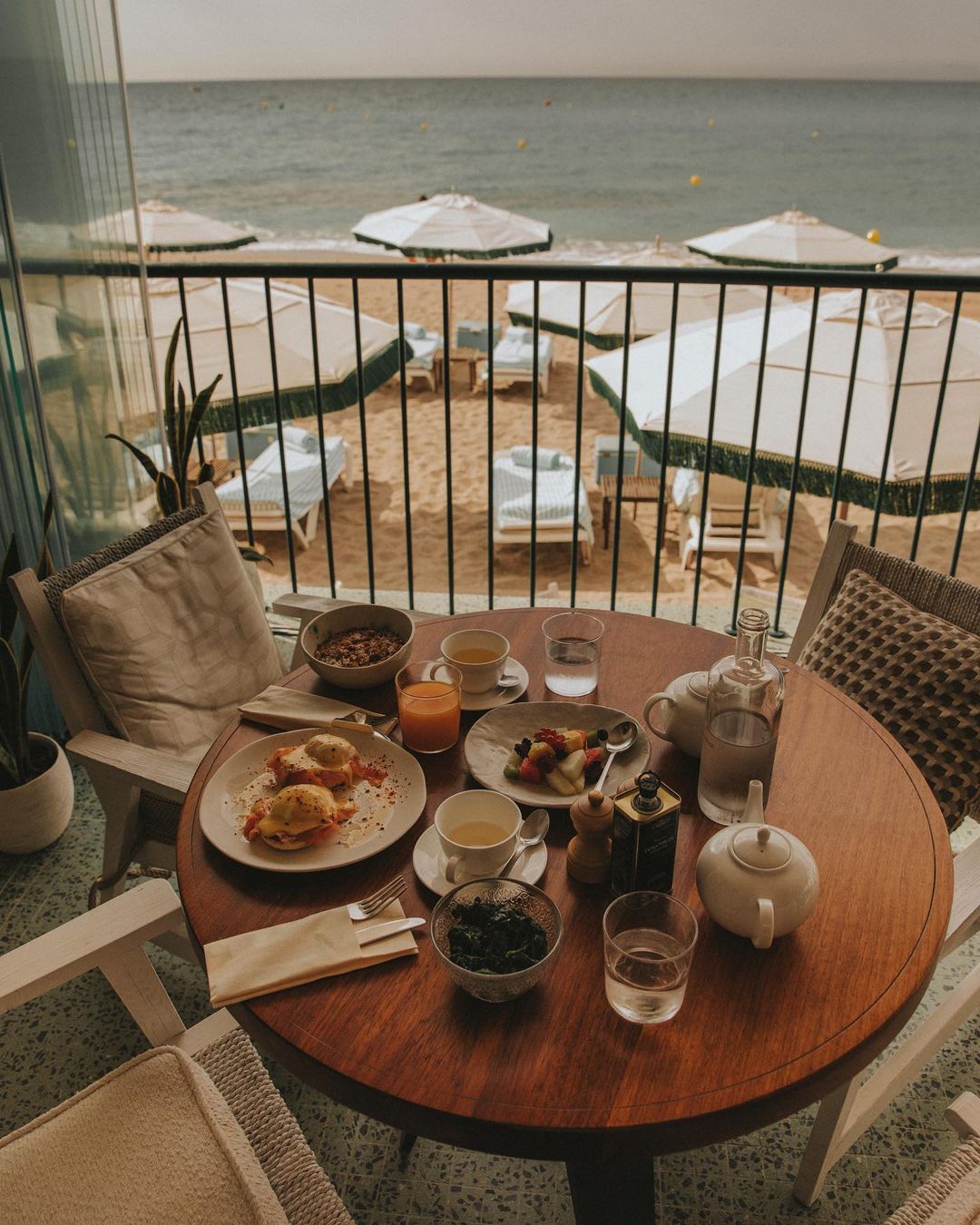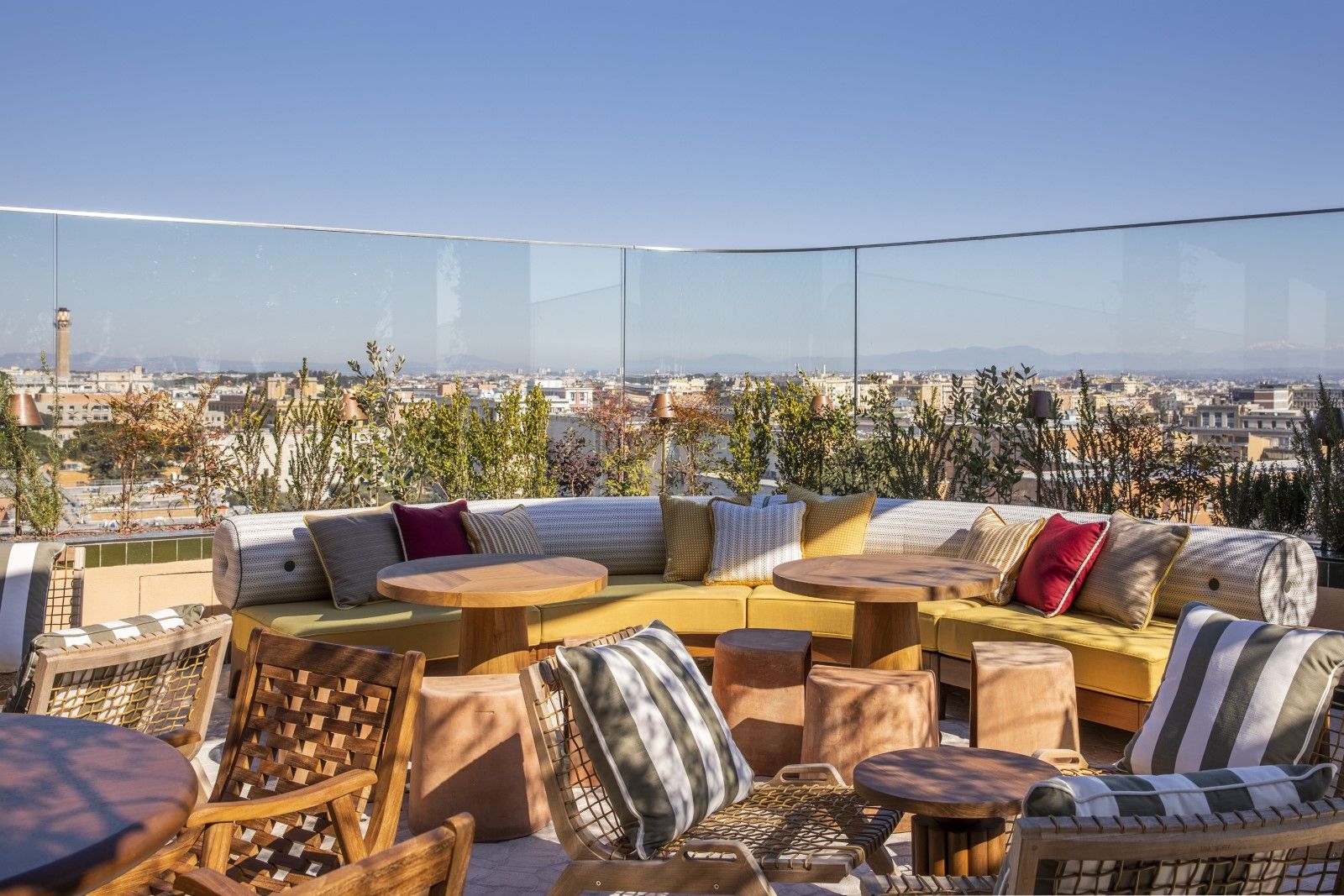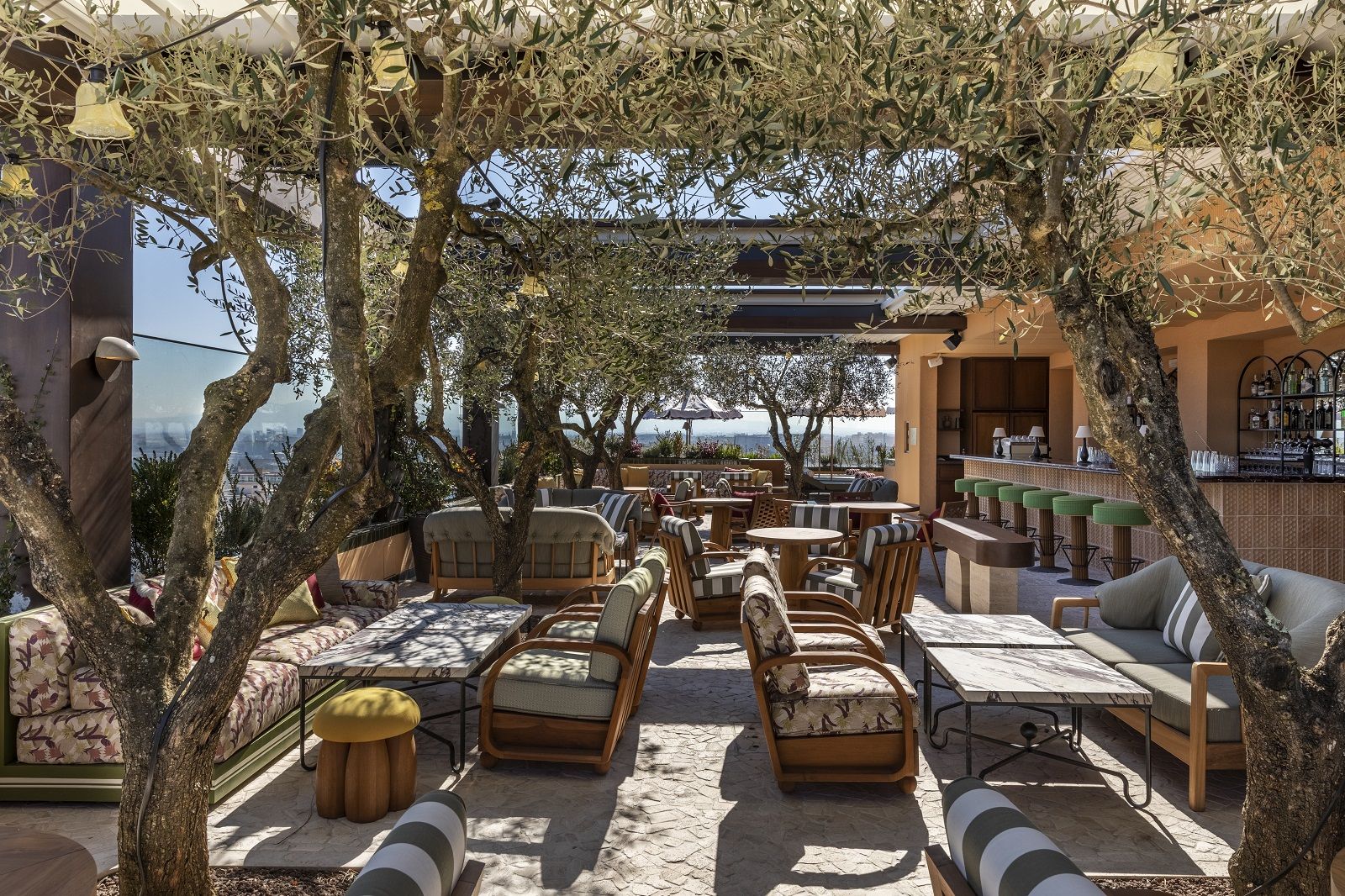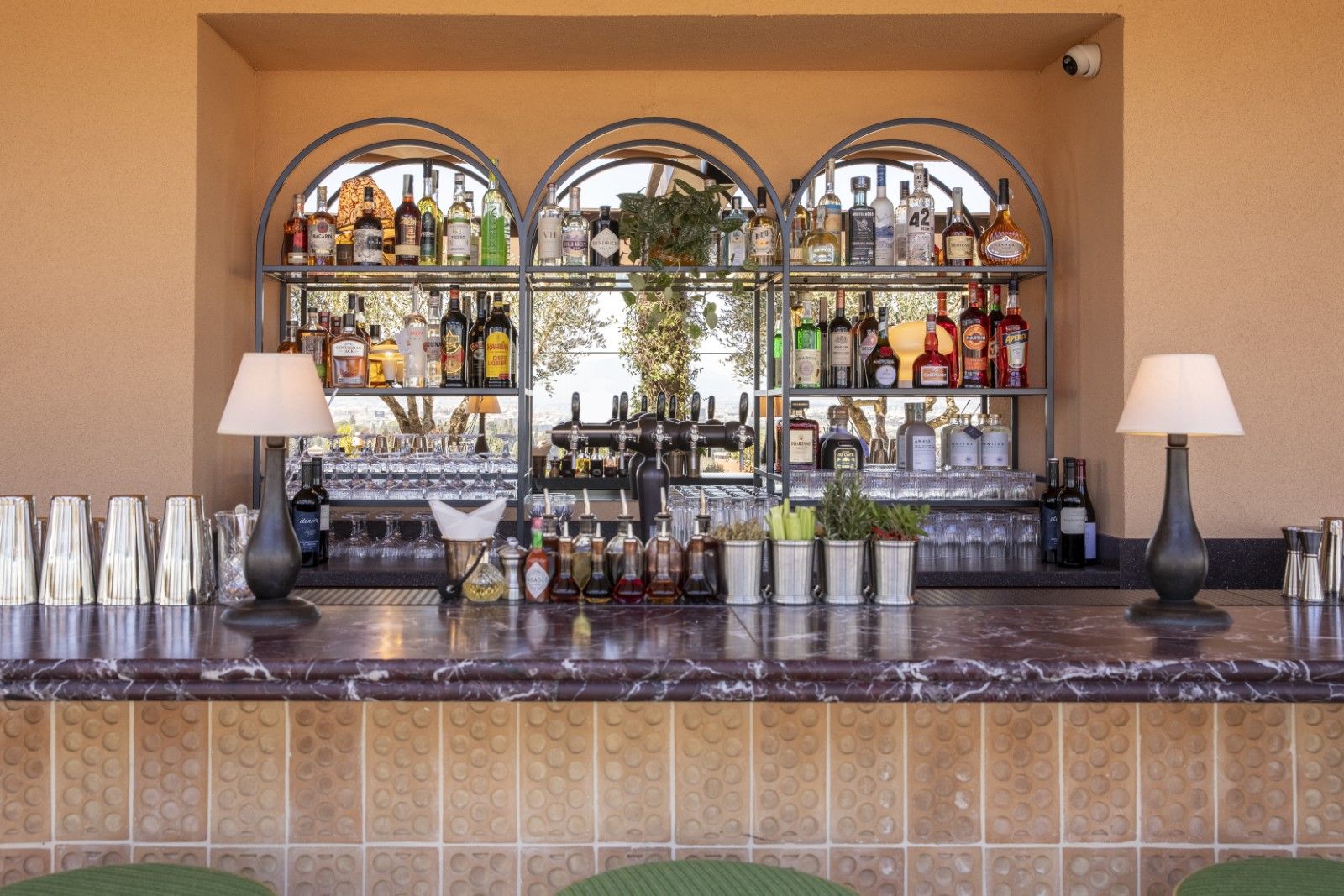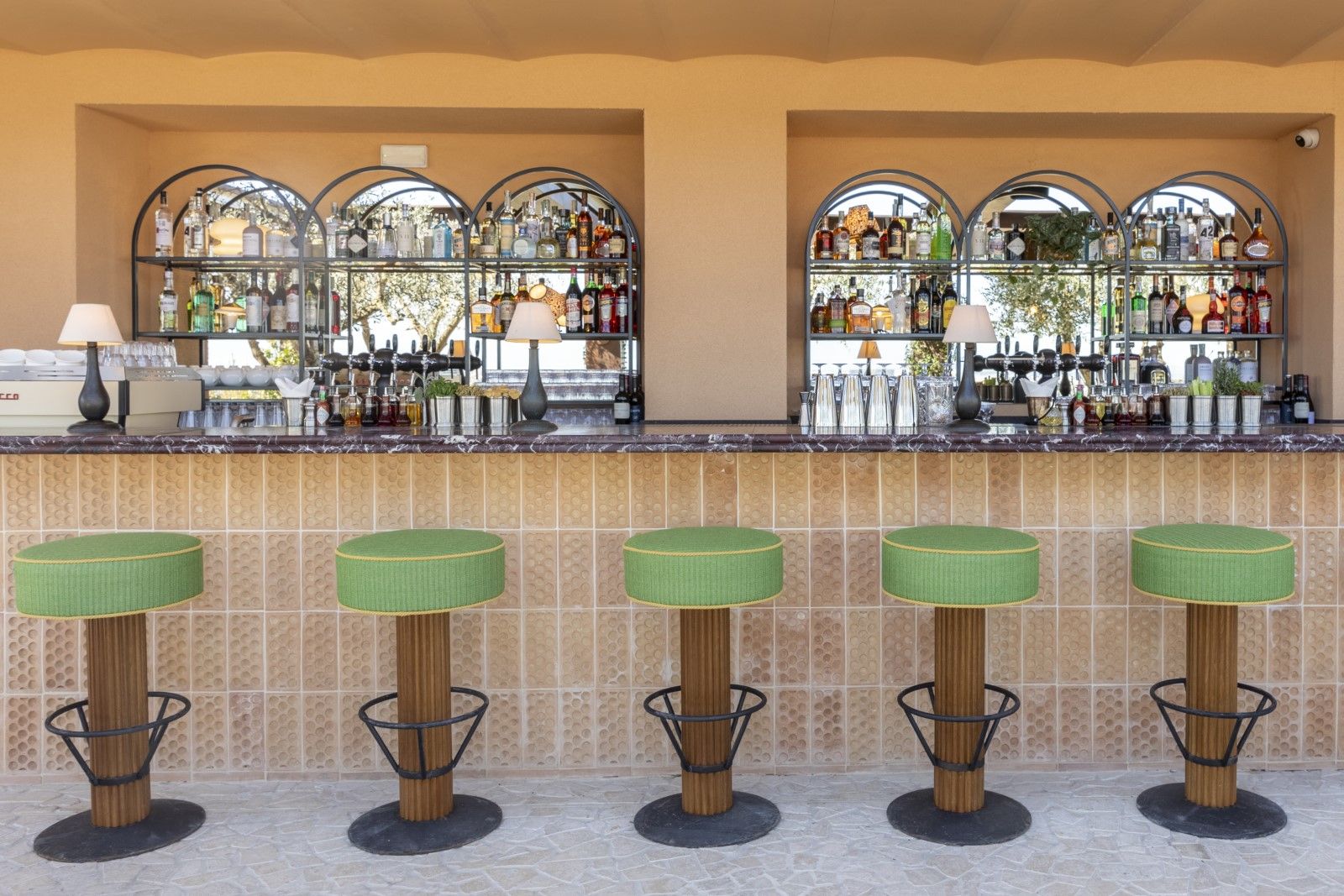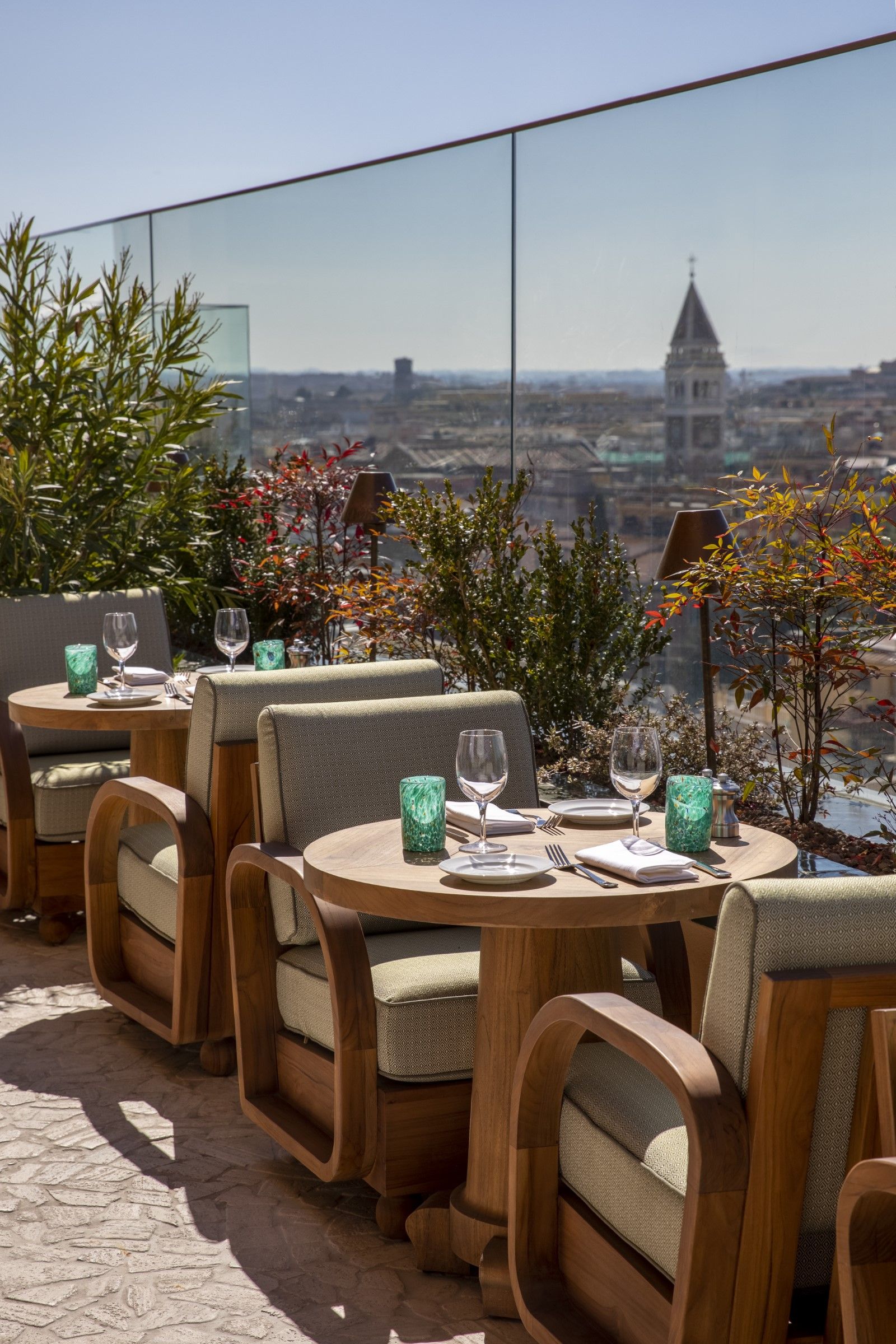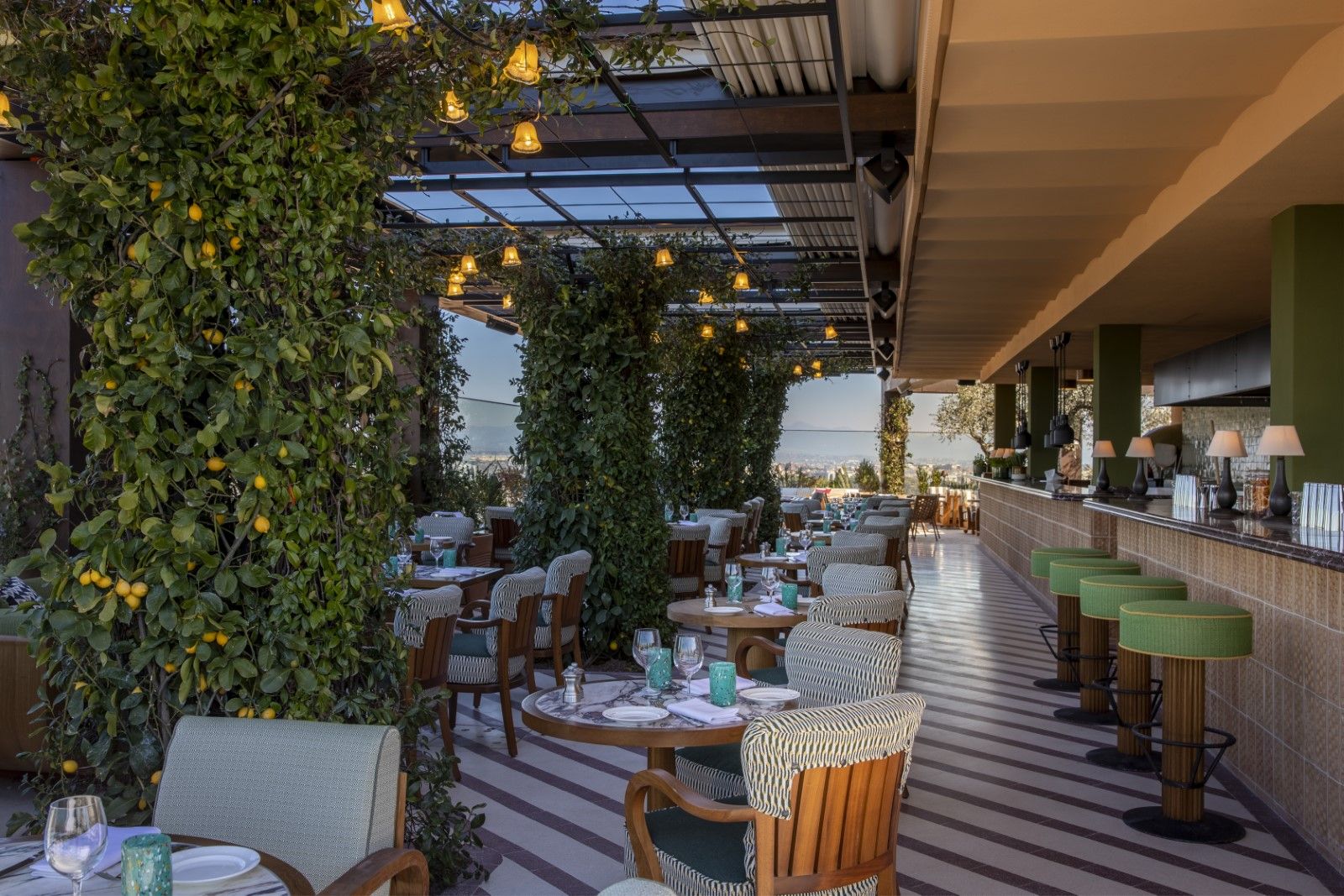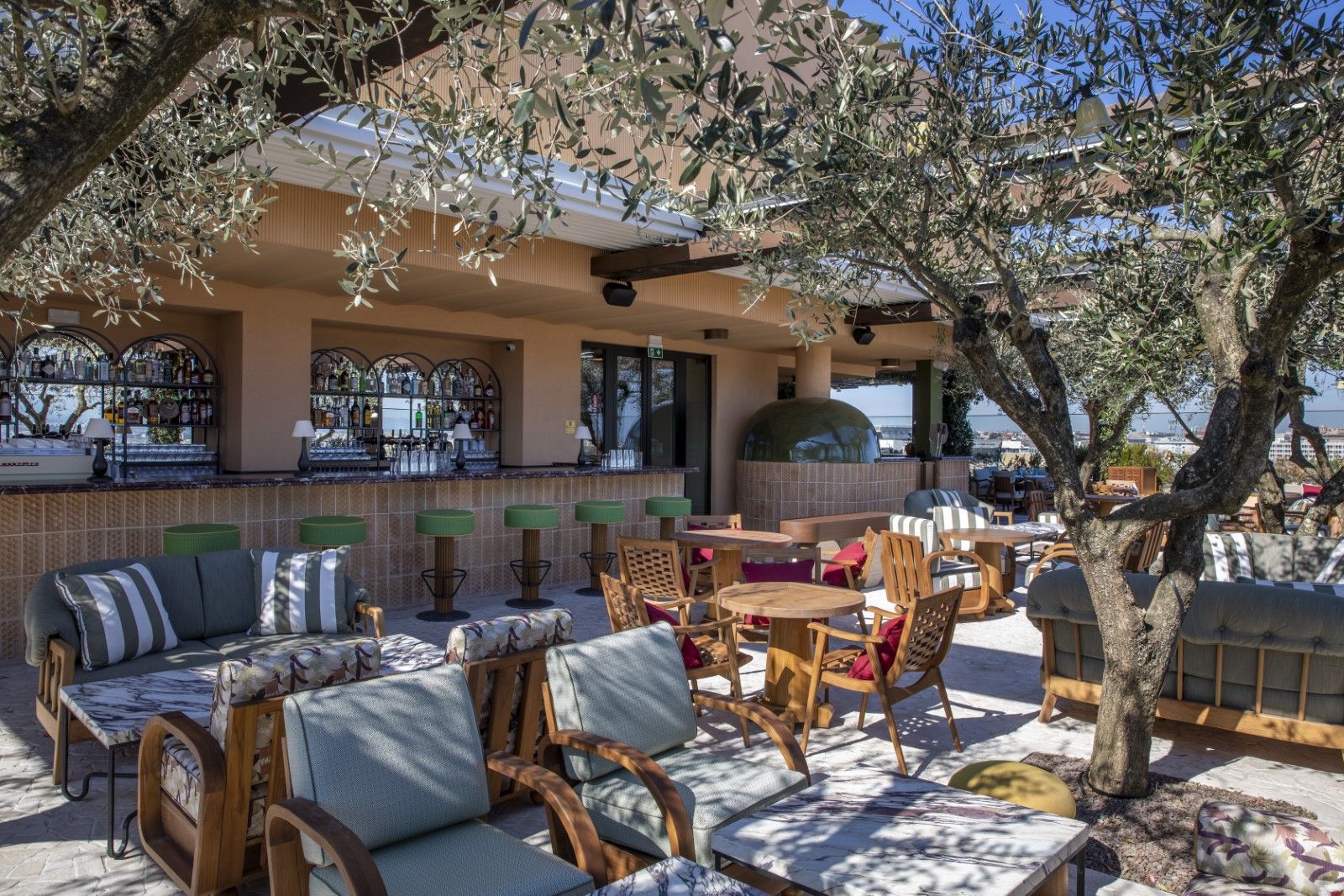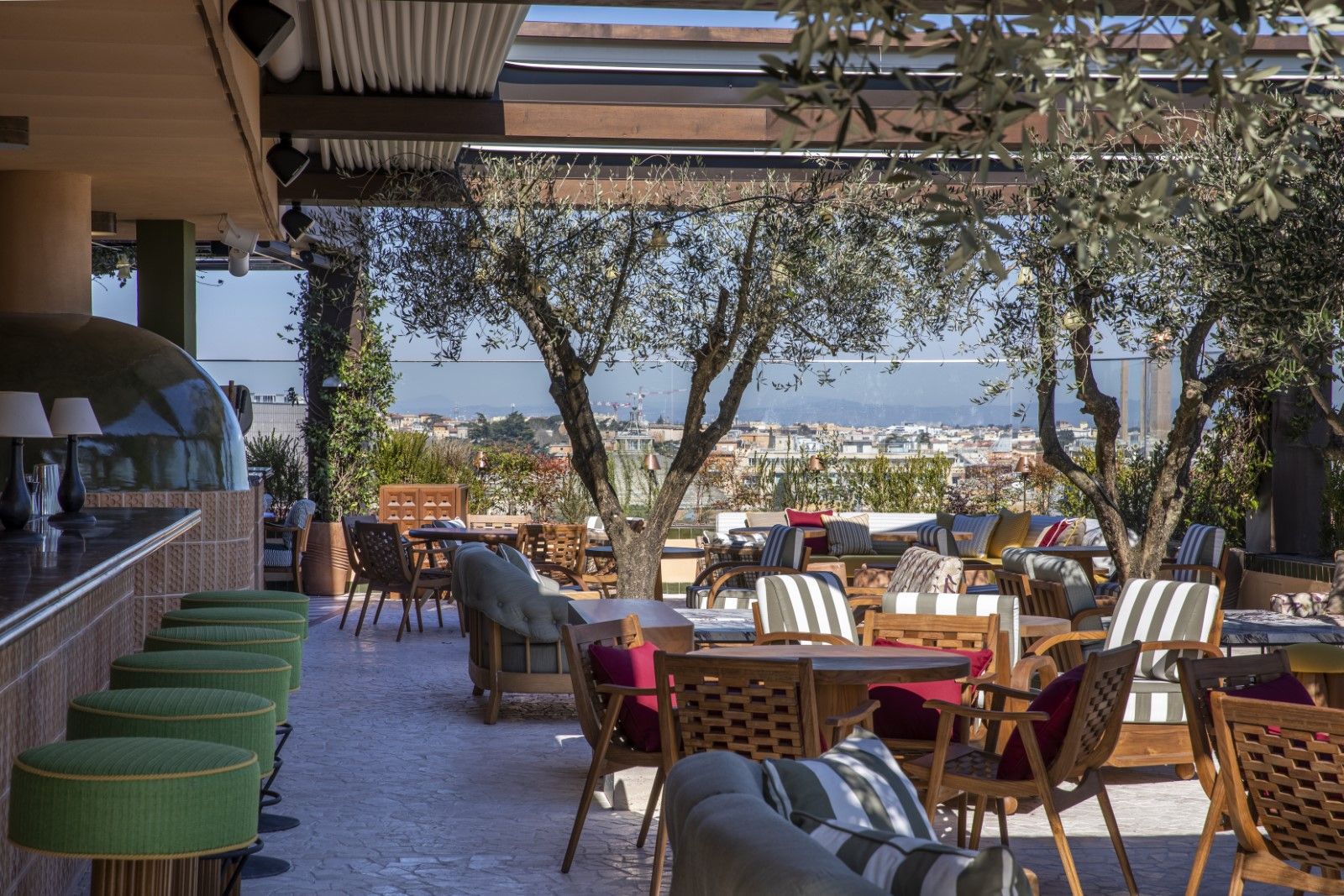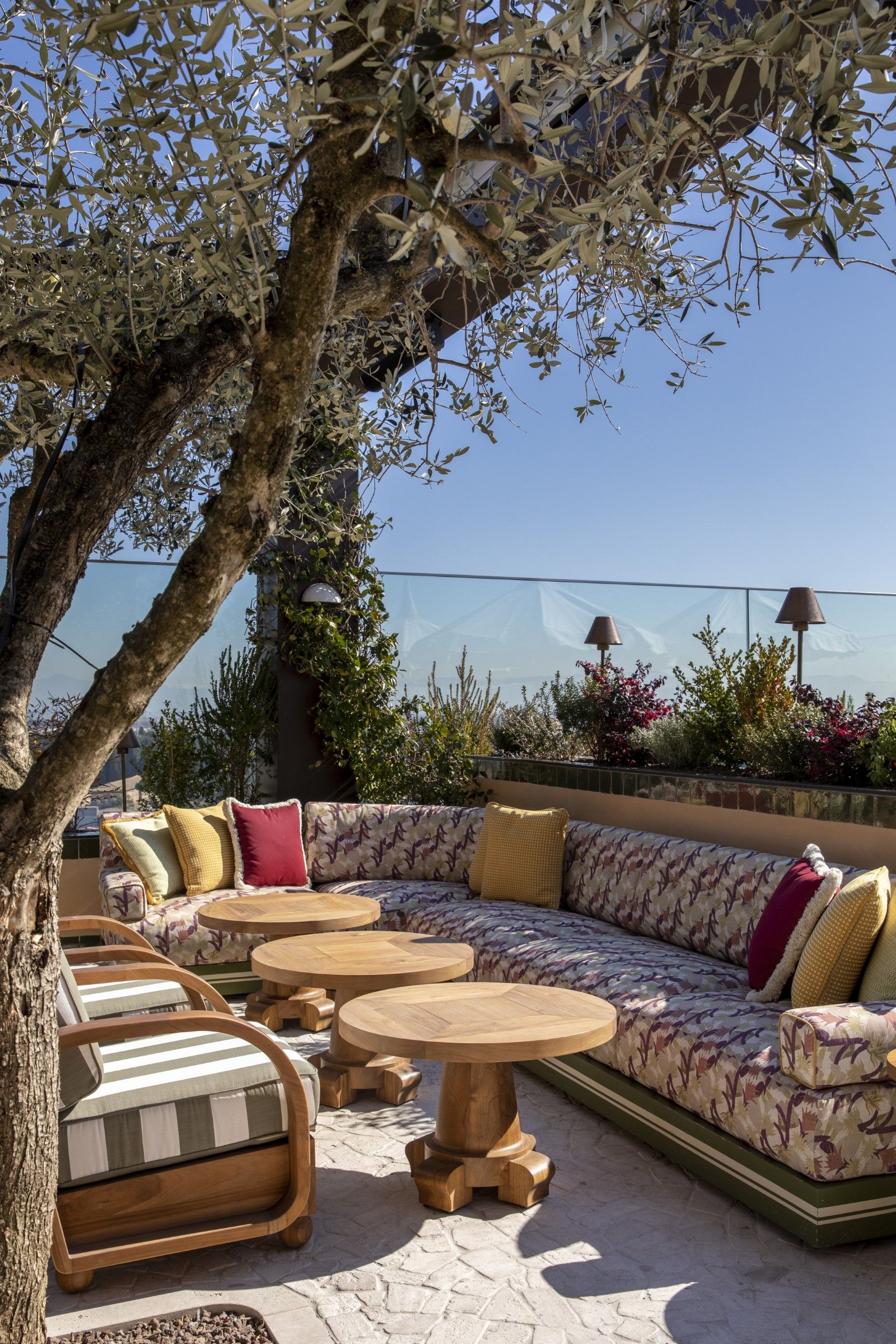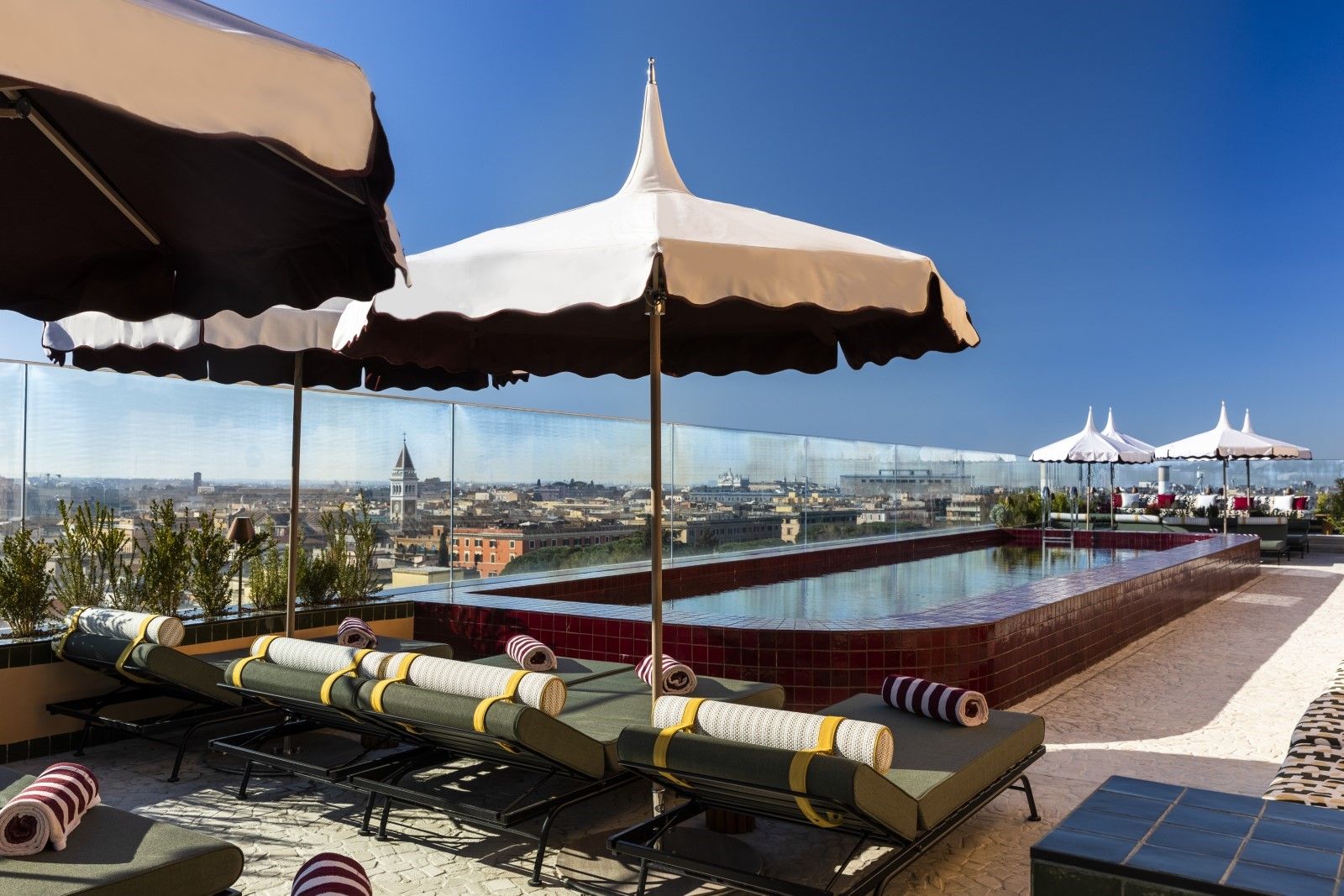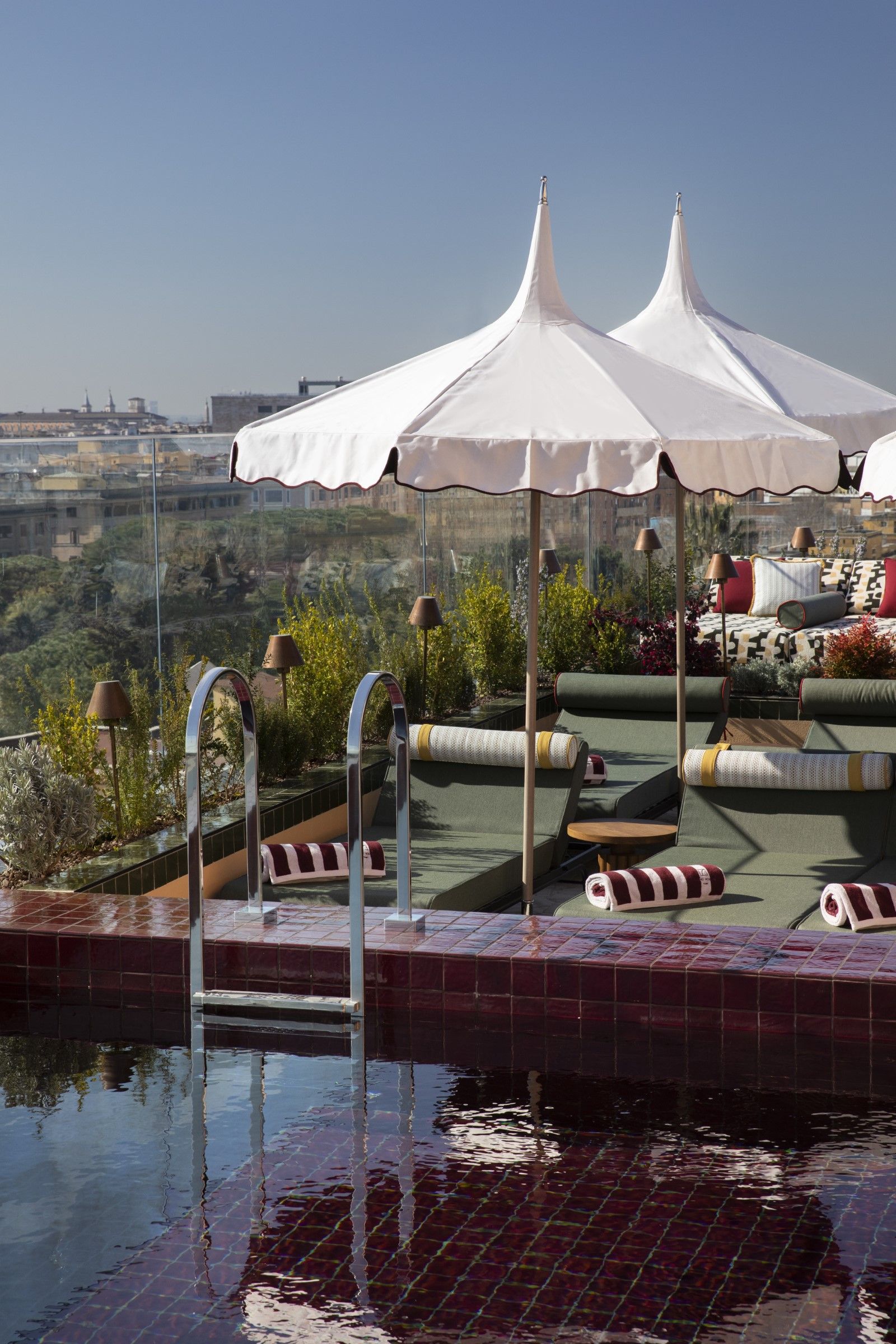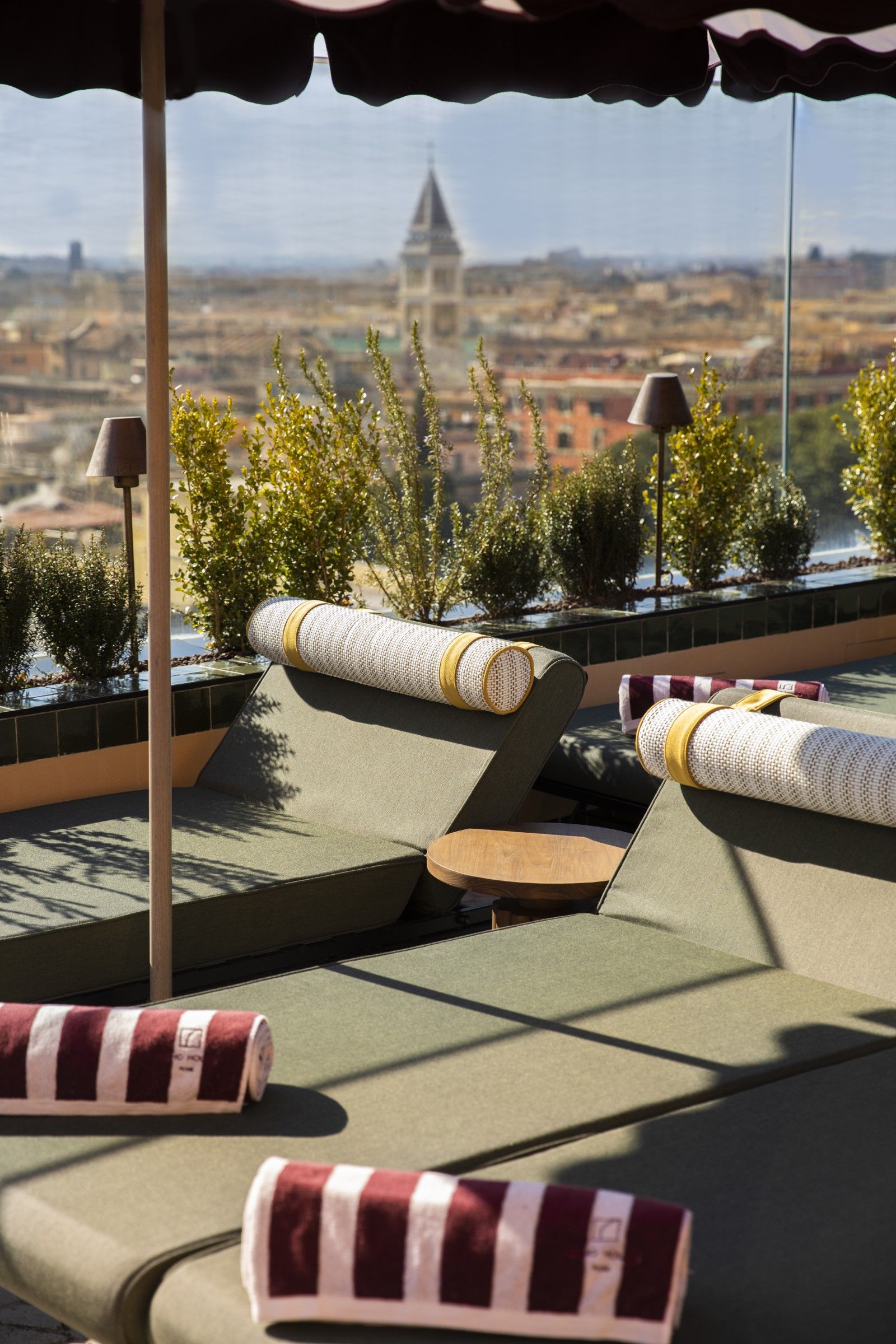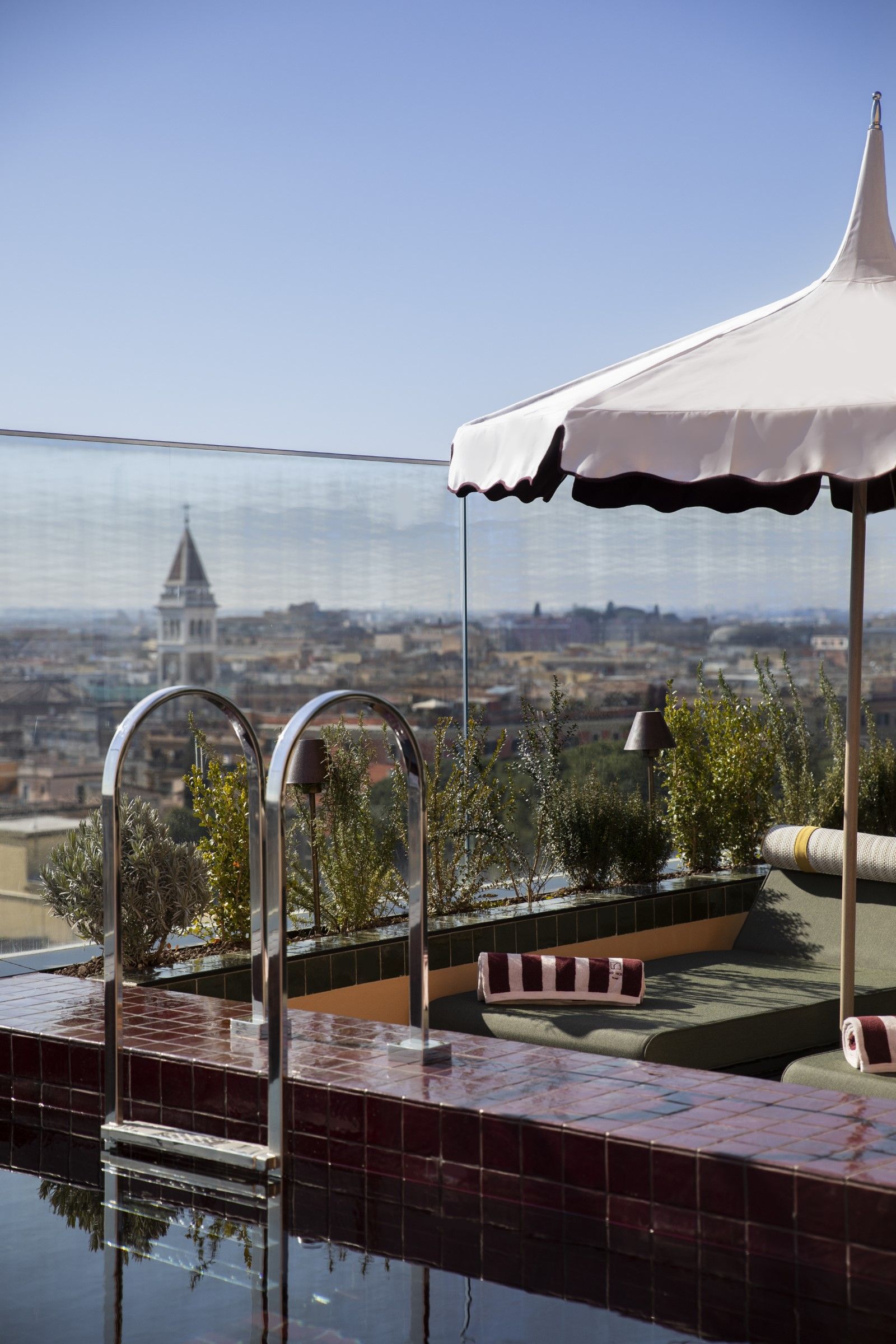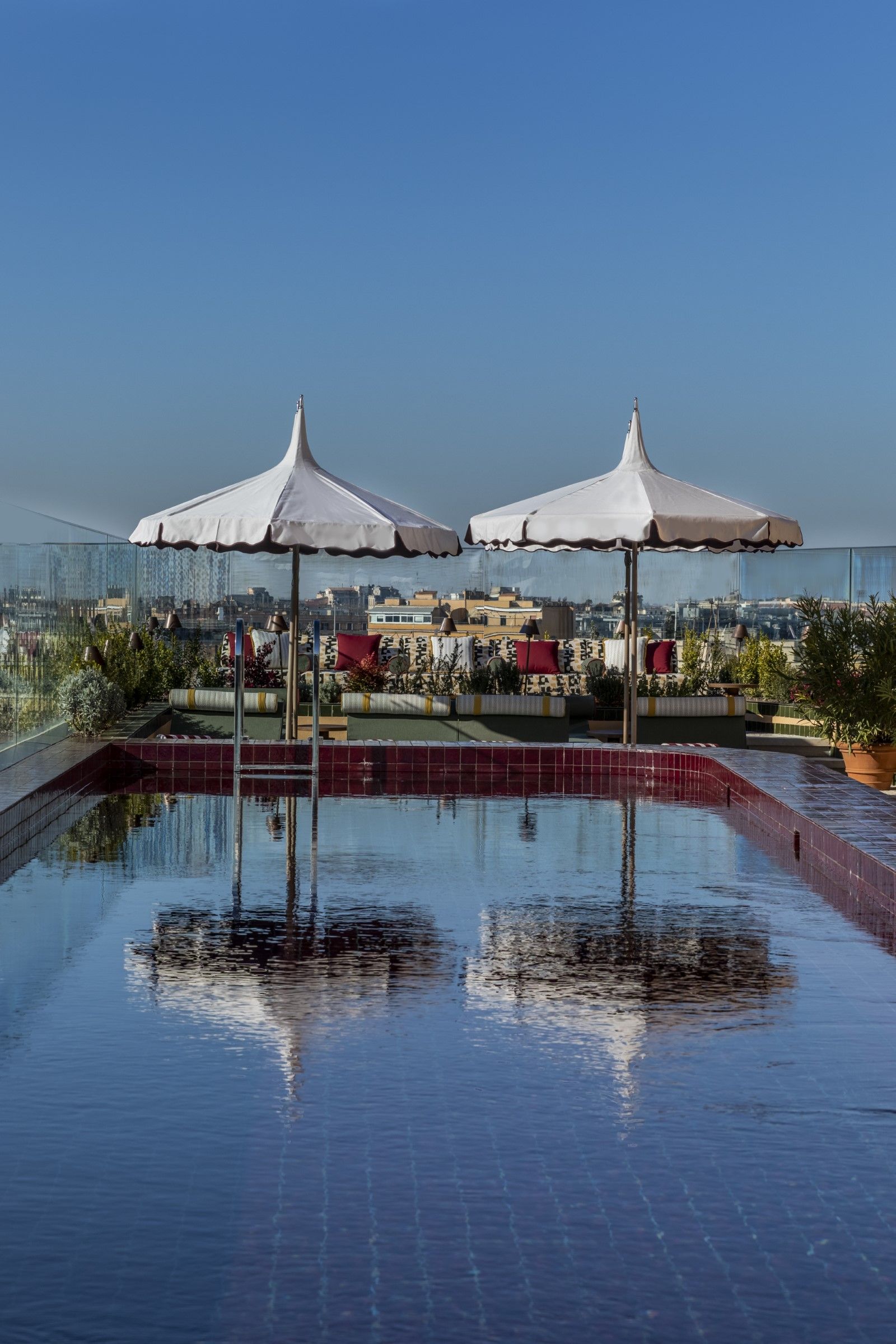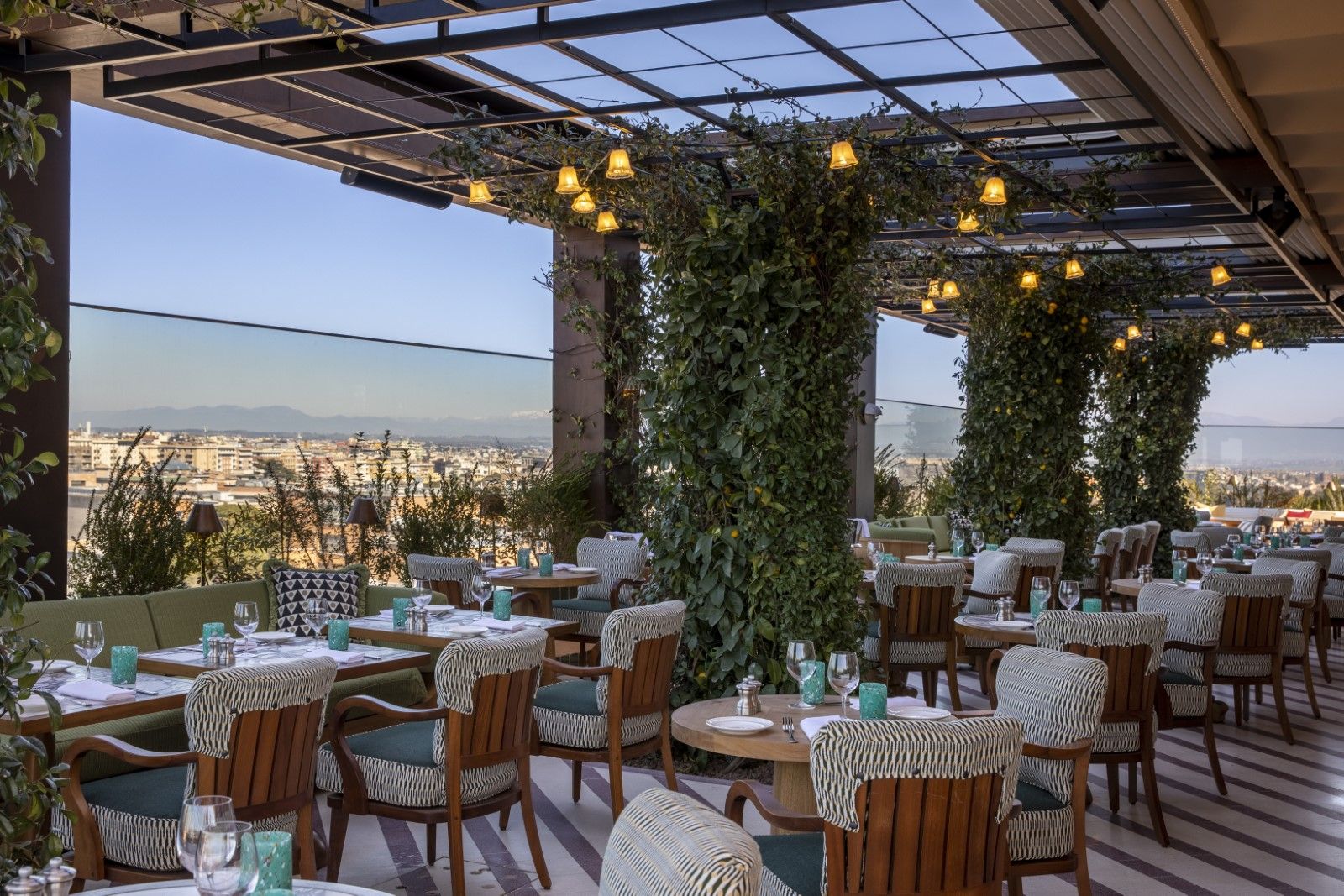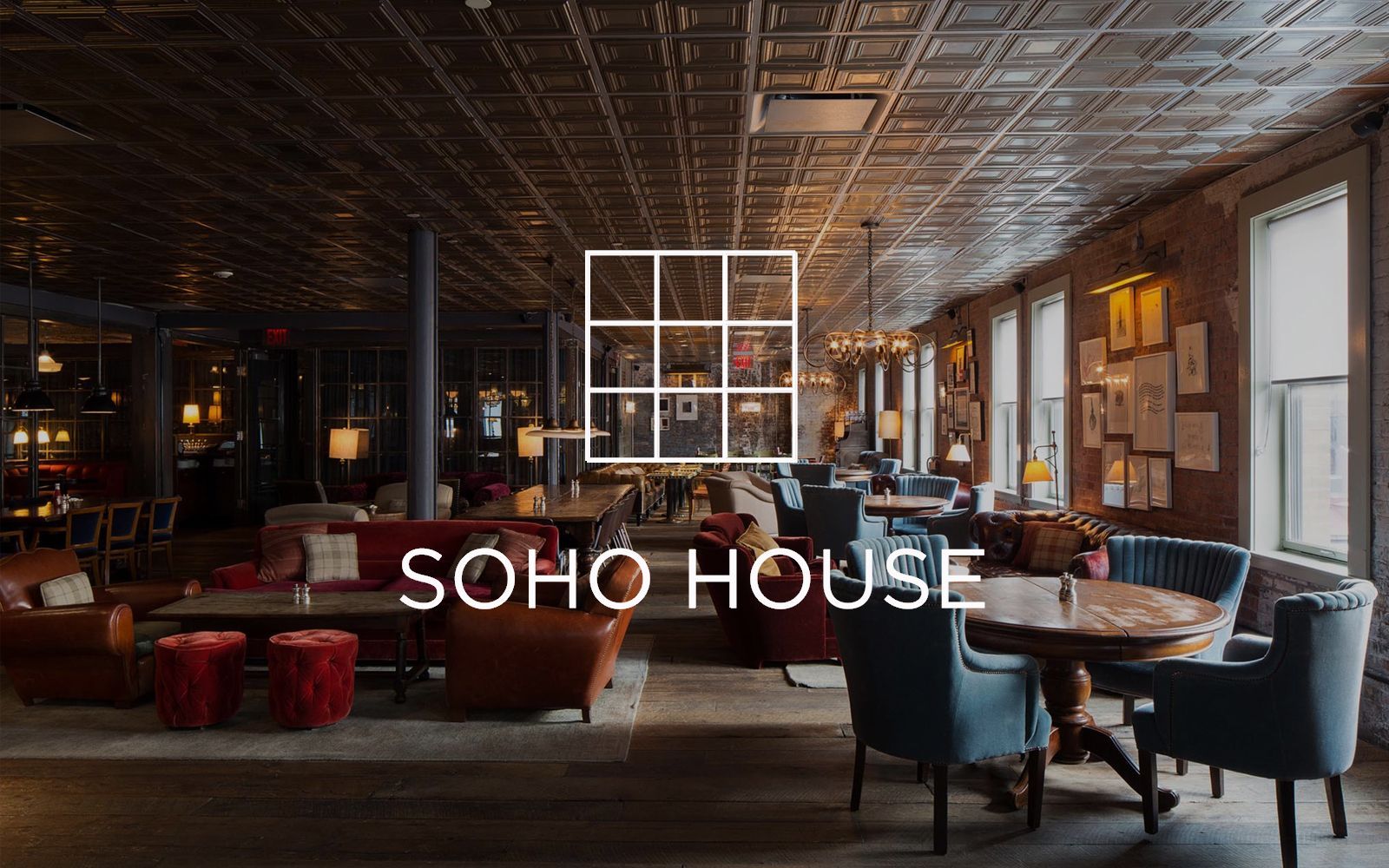
Why Soho House has become the most exclusive club in the world This weekend, the private club chain will open its new terrace at its Rome headquarters
This weekend, Soho House Rome will open its spectacular terrace to the public for the first time, overlooking the extraordinary San Lorenzo neighborhood that will house a pool, bar and most importantly a new location for the celebrated Italian restaurant Cecconi's. The news is not insignificant, considering how the opening of this terrace will bring the Roman headquarters of Soho House, opened in October 2021, to rival the other spectacular locations that the most famous chain of private clubs of recent years has opened in its unstoppable race around the world. But the story of Soho House starts way back, in London to be precise, in the mid-1990s.
In fact, it was 1995 when Nick Jones, founder of a small restaurant chain collectively called Over The Top, received an offer to acquire the space above his brasserie Café Boheme. The restaurant's upstairs spaces were accessible through a small door around the corner - a small door that would be the perfect entrance for a private club, Jones thought. After all, Café Boheme had become a favorite meeting place for a circle of London-based artists and creatives who could find a home in the private club. And it was precisely a home that the club should have resembled - a home in the heart of Soho. From there, inventing the name of the club was as easy as thinking up the logo, which reproduces the outline of the original building, with three floors interconnected through three different buildings.
Three years after its launch, Soho House had caught on: membership had grown, as had the waiting list of those who wanted to join. The main novelty of its concept, borrowed from that of English private clubs, was that it was dedicated to the young people of London's creative milieu - a category that in '98 was in increasingly rapid expansion and involved all aspects of creative life. The club had at its core a modern idea of belonging, based not so much on crazy parties or business networking, but more on open communication and creative productivity. Clearly, this lifestyle also included a few comforts - such as those offered by Babington House, the club's country headquarters in London, located in a Georgian-era mansion among the green hills of Somerset, which housed in an old barn the spa that would later become the Cowshed Spa - a chain that is now widespread throughout the world and dedicated to wellness and natural cosmetics, as well as a beauty brand whose products are based on the aromas and medicinal plants found in the garden of Babington House. Thanks to the Babington location, the success of the club increased to the point where it was necessary to open a new club in Notthing Hill, the Electric House, so called because of its proximity to the historic Electric Cinema in London.
The following years were those of the real turning point: in 2003 Soho House opened its first American location in New York, the same one that Samantha Jones wanted to sneak into in an episode of the sixth season of Sex & The City. It was here that the rooftop pool was introduced for the first time, and by the summer of that year it had become a citywide hit, eventually inspiring all of the club's subsequent locations, which built a rooftop pool whenever possible. The following year, Soho House acquired Cecconi's, one of London's best-loved Italian restaurants, making it a natural companion to the club and bringing it to 12 locations around the world today. In adapting the classic restaurant to the mood of the Soho House universe, its aesthetics were updated, making it more relaxed and easy-going, with an all-day menu and a bar - features that therefore translated on a gastronomic level the concept of hospitality at the base of the club: a home for all, where members could always sit and eat or drink what they wanted without worrying about schedules or closures. The great success of Cecconi's led to the opening of two other locations in London, in the neighborhoods of Shoreditch and Chiswick.
In 2010 the chain began its spread in Europe with the opening of Soho House Berlin, inside a former luxury department store that was abandoned after the war and then occupied by the Soviet Party during the Cold War years. Its success led, in the following years, to the opening of ten more Soho Houses, including the one in Istabul, with the one in Rome being the most recent and the one in Copenhagen opening soon. In the same year, the second American House opened in West Hollywood and a new concept, the Beach House, was inaugurated in Miami before expanding further to Toronto, Chicago and the Mayfair area of London. Five years later, Soho House was a multi-continental empire as well as the gathering center for a populous fauna of creatives, entrepreneurs, celebrities and managers - right around this time, at the height of the gig economy, the club's administration noticed the onset of a new pattern in the lives of its members, whose jobs were increasingly outsourced and flexible.
Thus was born the idea of an exclusive co-working space where people could do their work remotely and network - Soho Works was born, which soon had nine locations across London, New York and Los Angeles. That same year, the club opened its second country location, Soho Farmhouse, in Oxfordshire with a series of cottages that were intended to echo a modern concept of country living. The expansion into lifestyle that began with spas and restaurants continued with furnishings: in 2017, Soho Home was founded after many of the club's members began asking managers where they could purchase the furnishings seen in locations around the world. Meanwhile, the presence of the Houses and Beach Houses increased in Europe and America. In 2019, however, expansion into Asia began with the first clubs opening in Mumbai and Hong Kong.
Today, Soho House has grown into a vast network of venues and members that wraps around the world. Its main merit is to have grasped years in advance the communal nature of the new generation of cosmopolitan creatives that was taking hold around the world. The novelty of its concept (as well as the secret of its success) lay precisely in its ability to conceive of hospitality as an all-encompassing whole, allowing members not only to experience a certain kind of lifestyle but to turn that lifestyle into a hallmark and experience that members could take outside the club's doors and turn into a hallmark of a new international milieu.











































